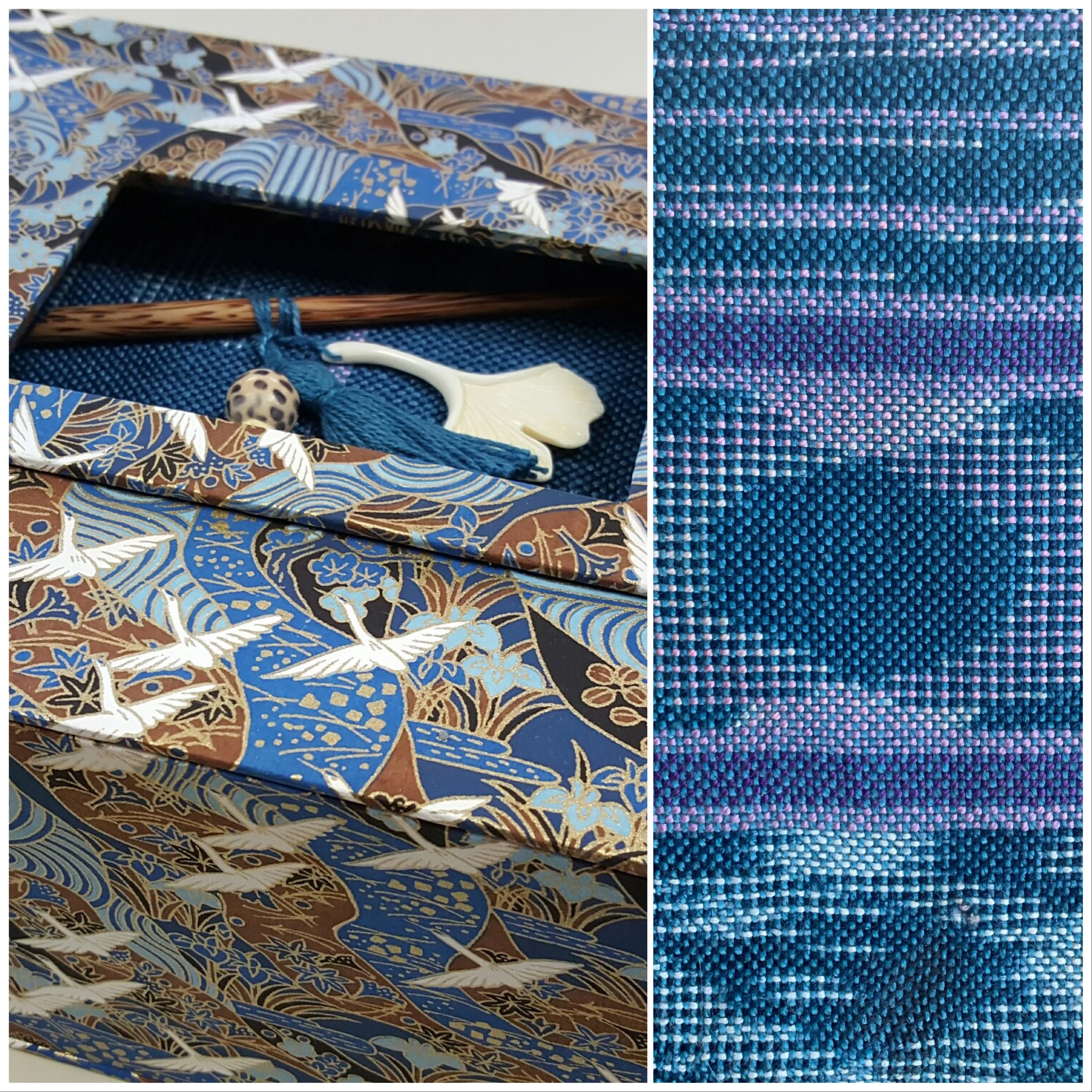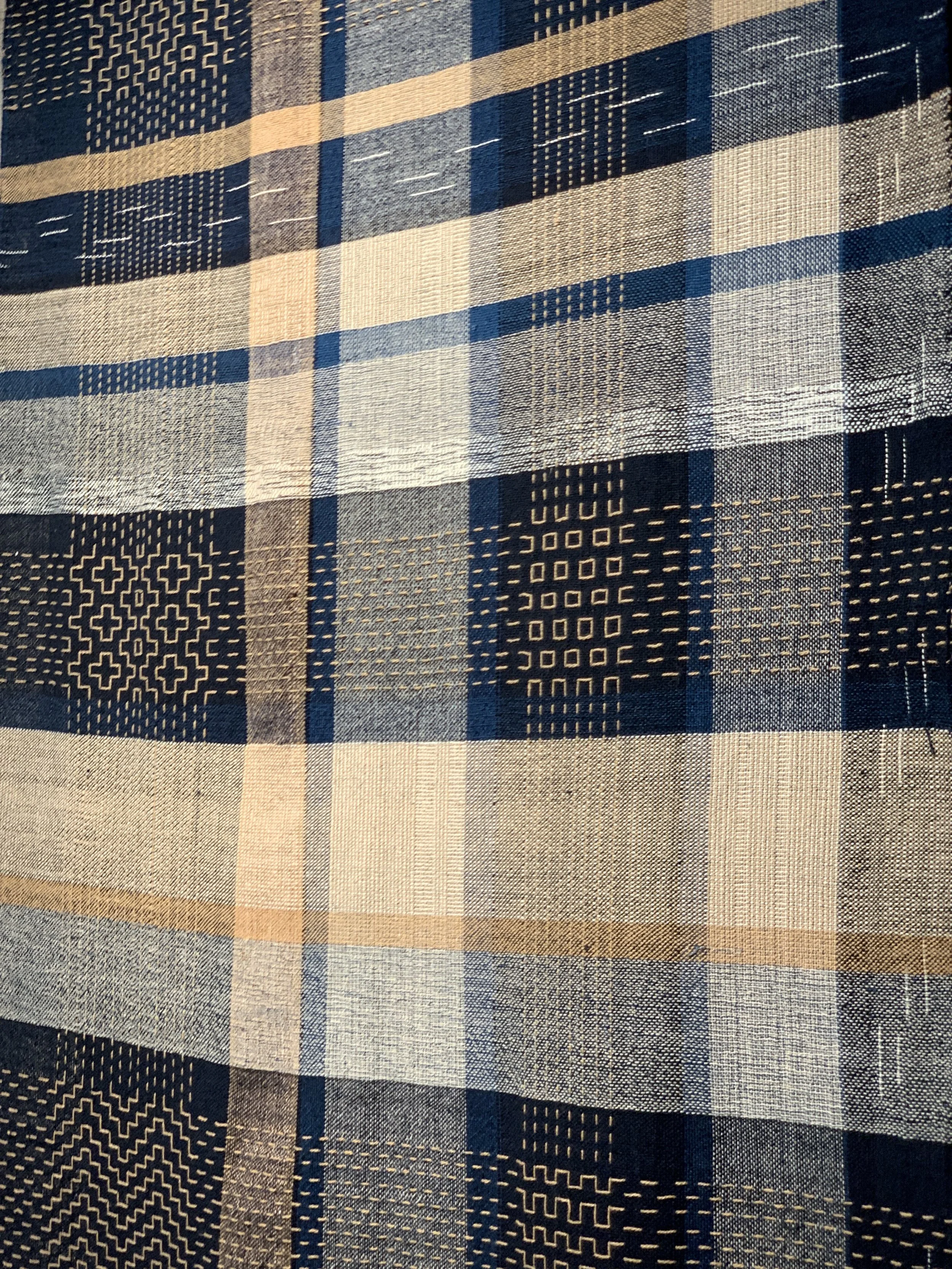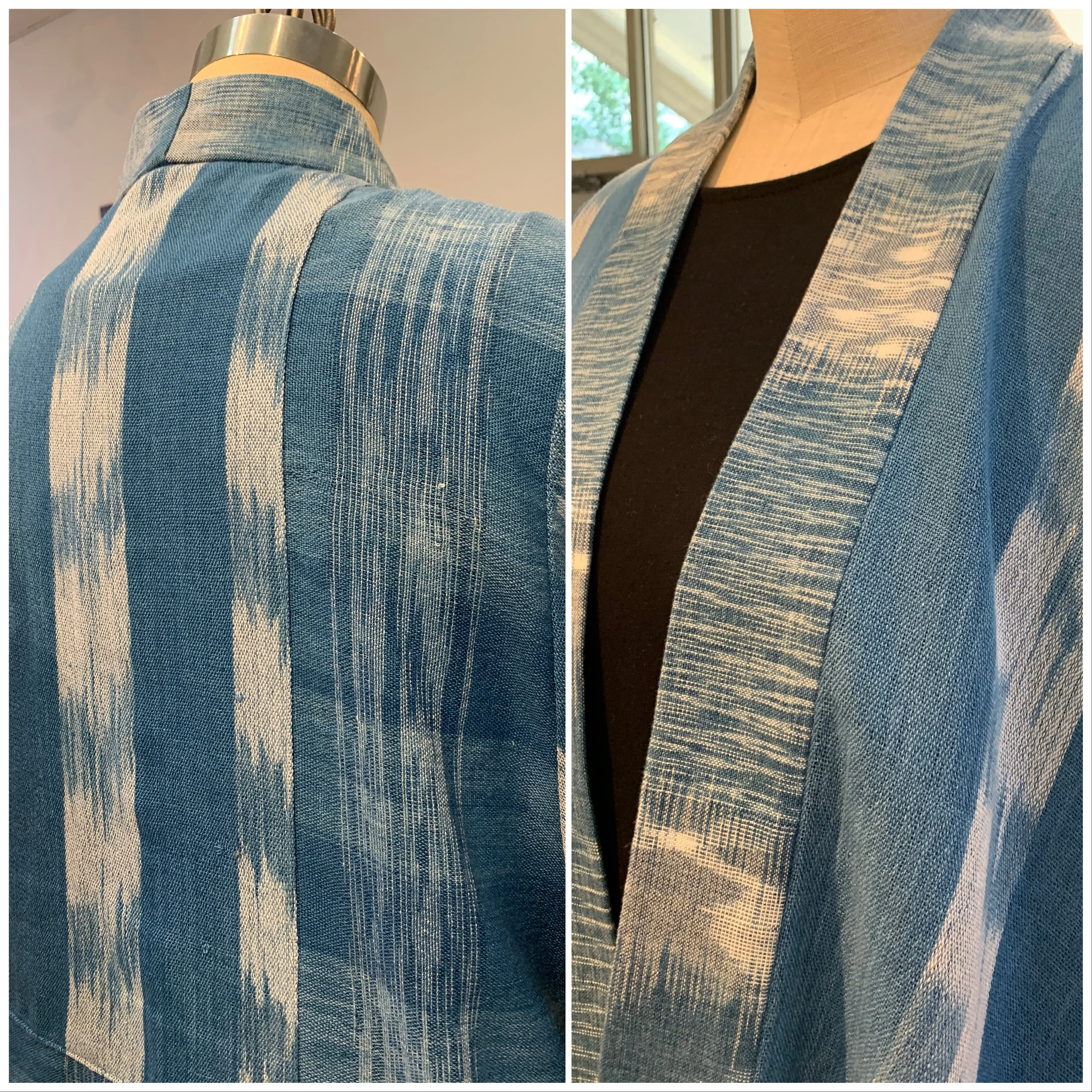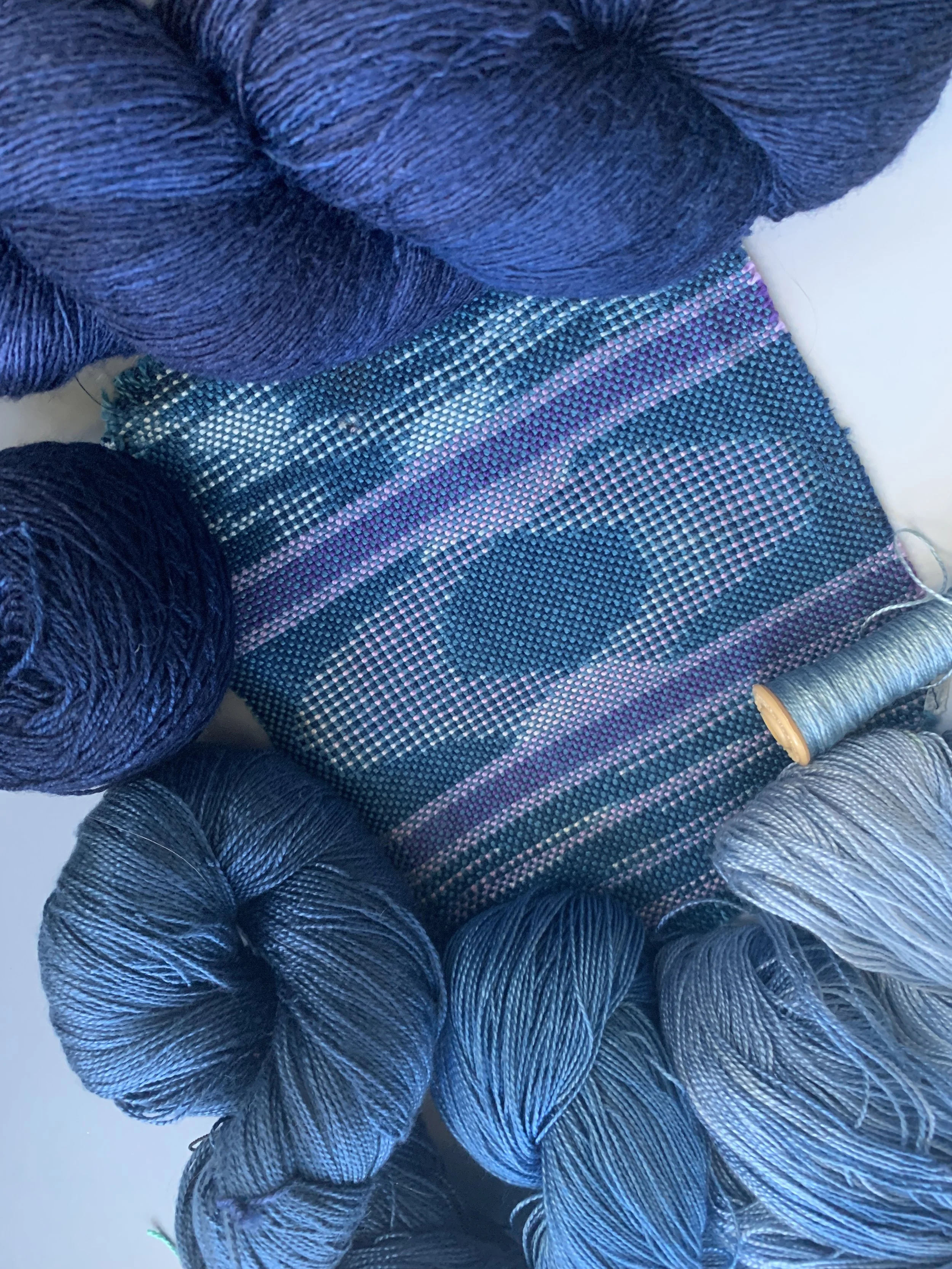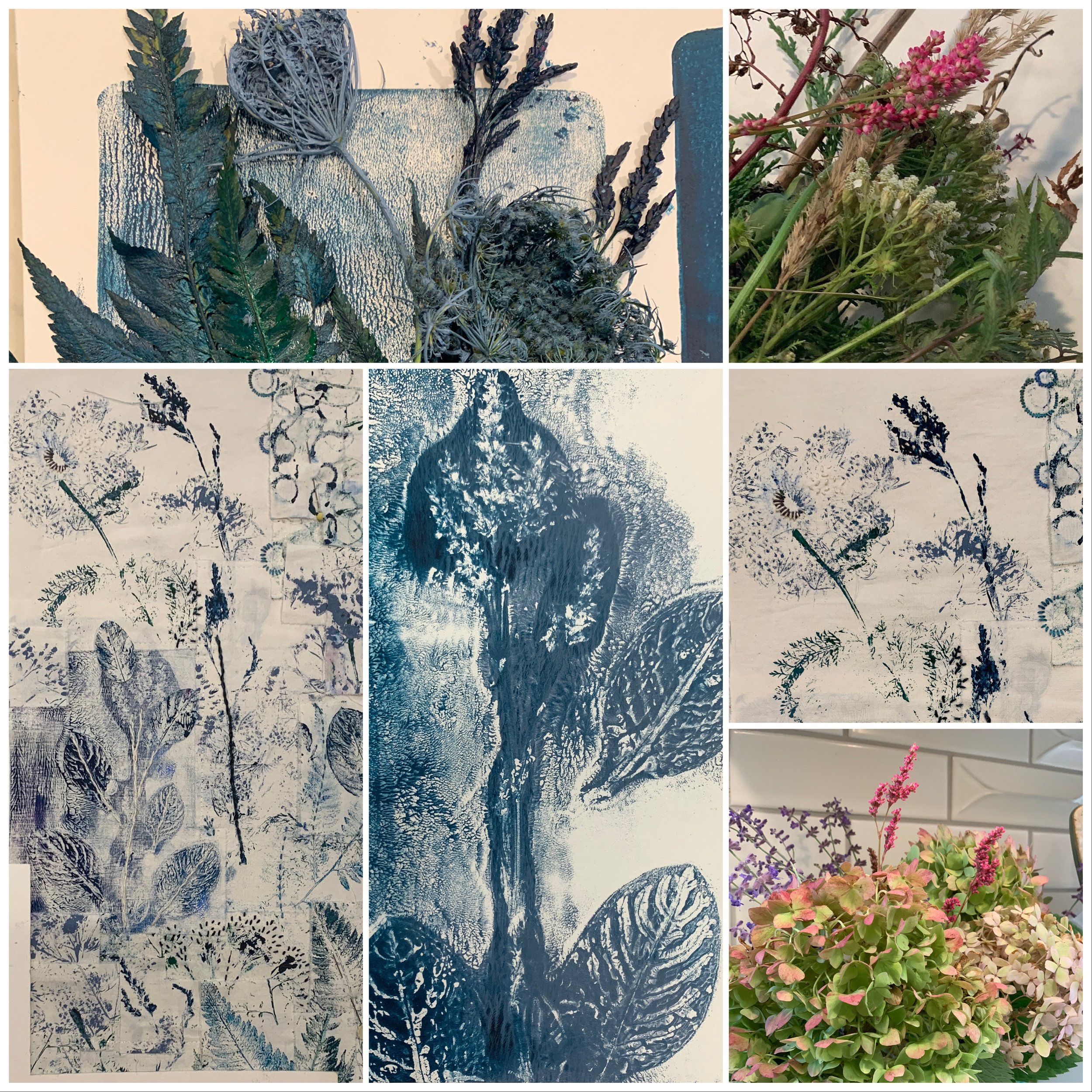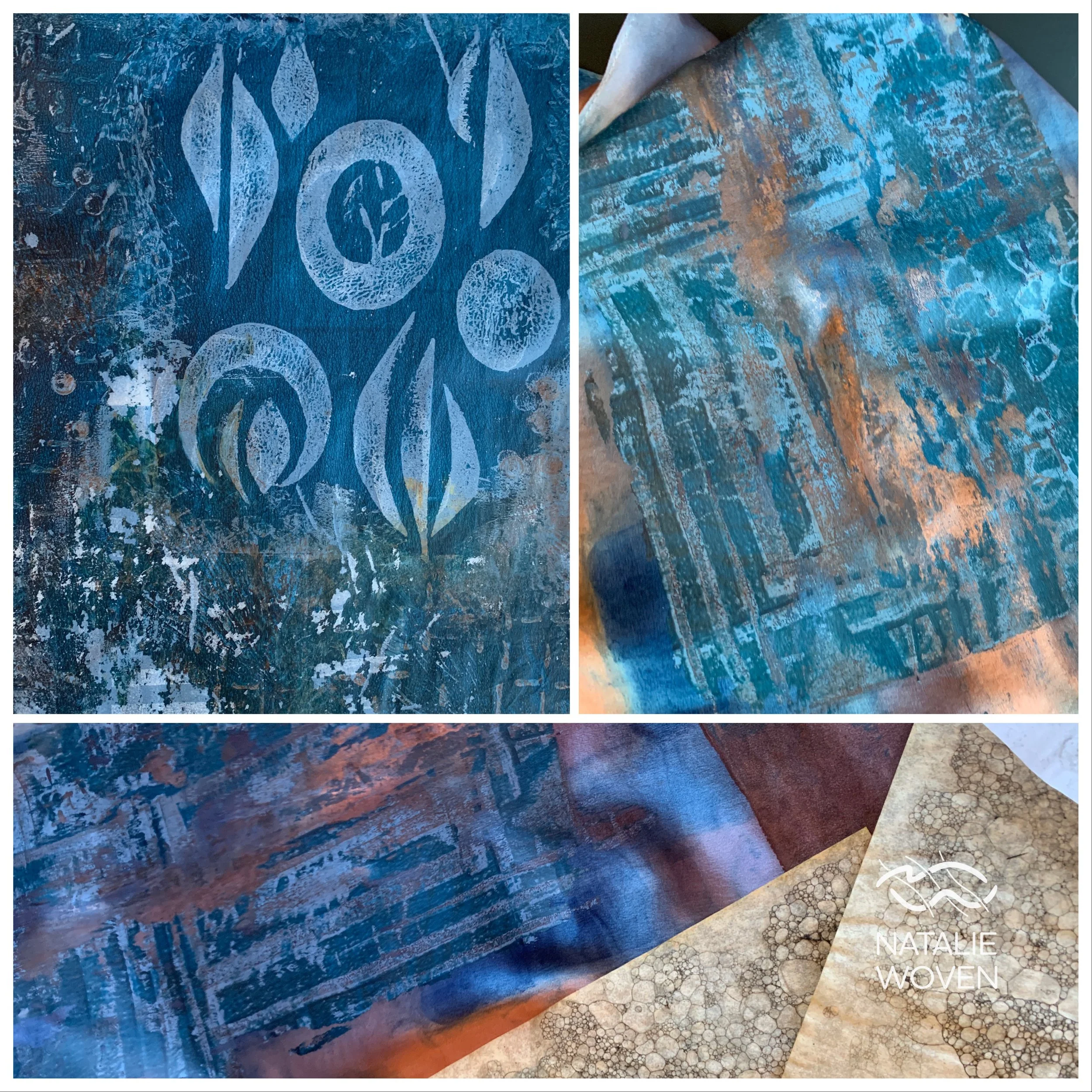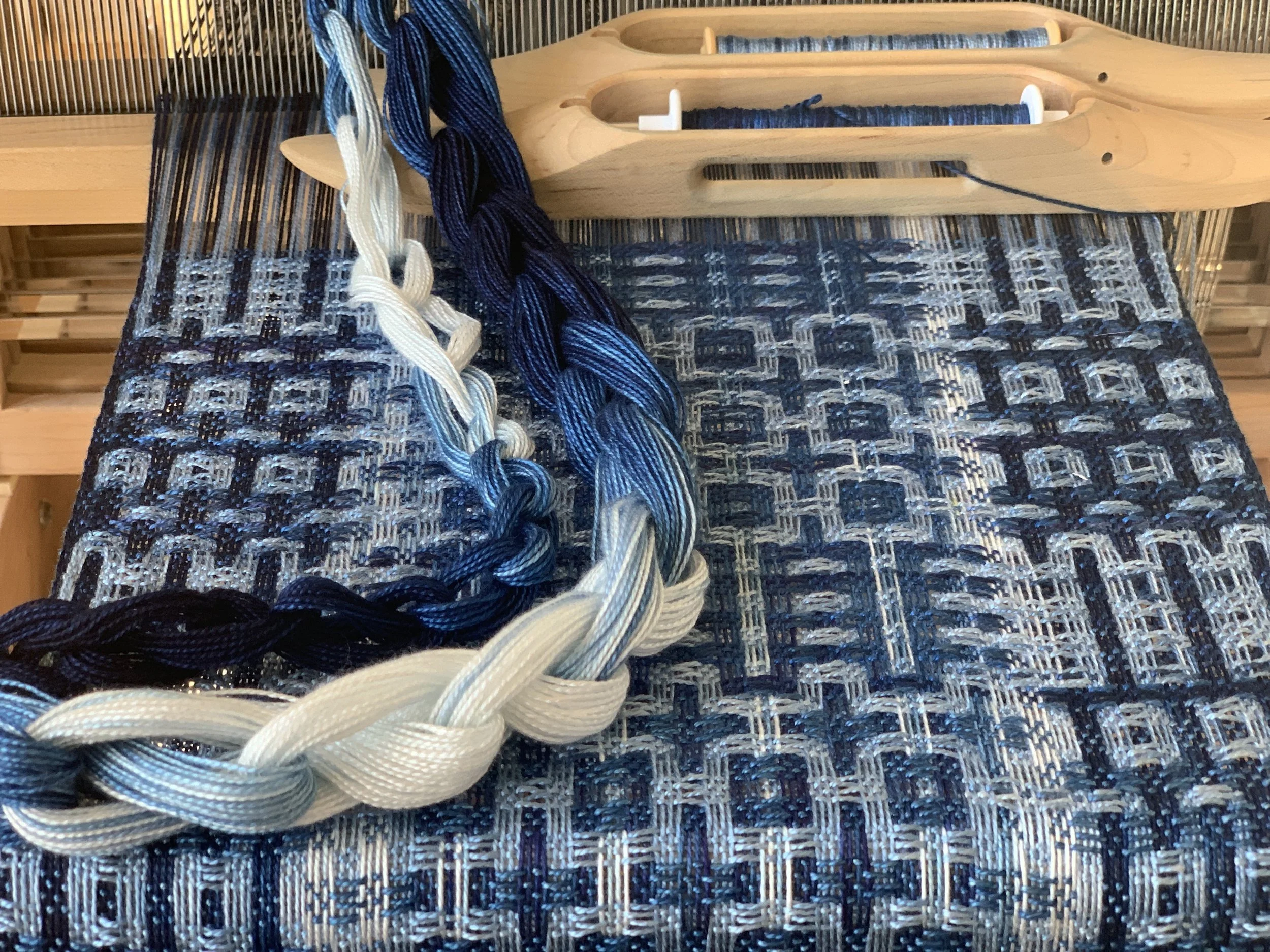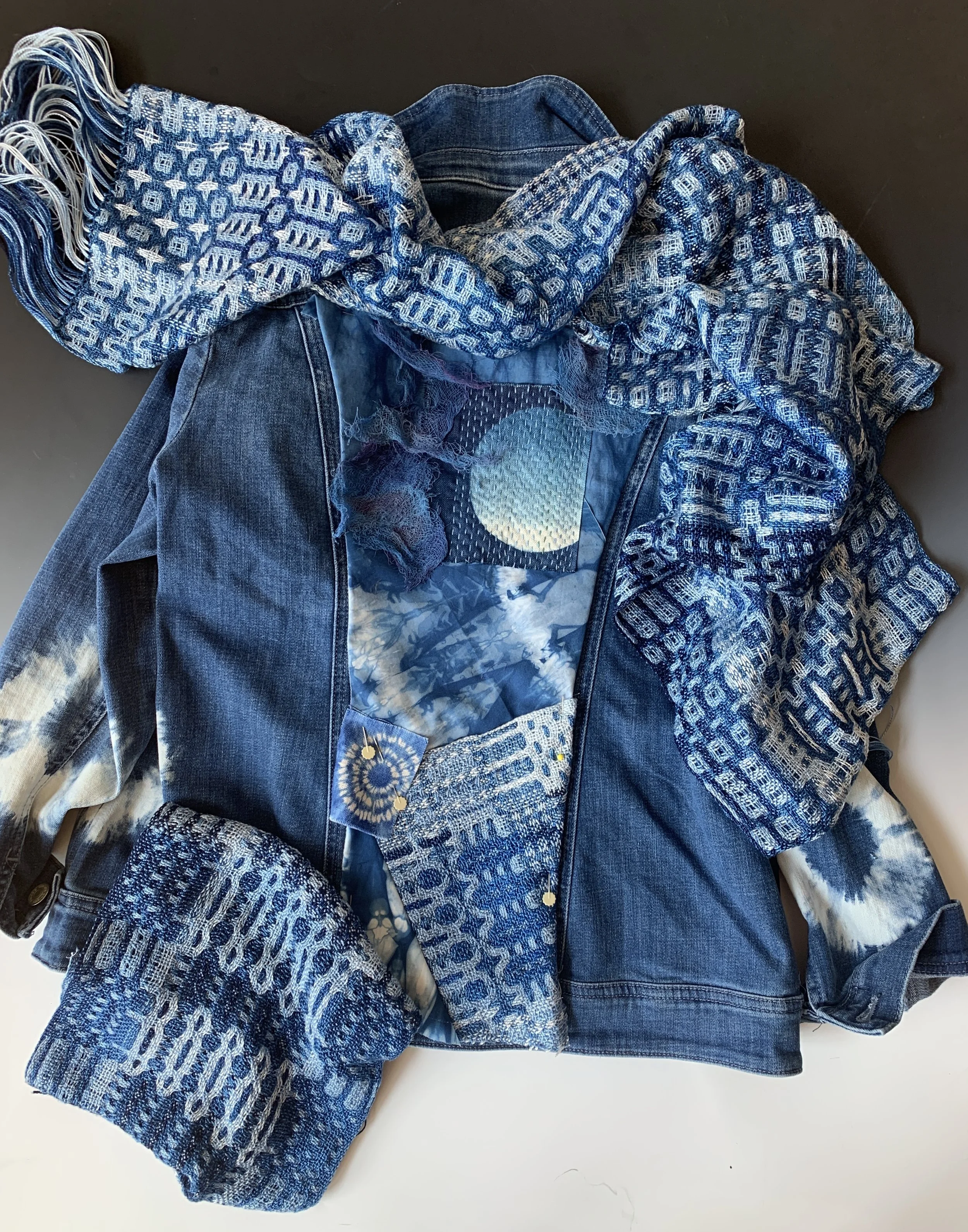Revisiting Indigo
I love collecting indigo hand dyed fabric and fiber! But it’s been some time since I’ve woven with indigo hand dyed! My first experience in dyeing indigo came in 2016 at the John C Campbell Folk School. My instructor was Beth Johnson and we used indigo (vat) to dye skeins of cotton and bamboo using kasuri tape as resists. We experimented with weaving weft ikat by using the skeins for pattern wefts. I was a young weaver at the time and I can recall rinsing the indigo dye out for hours or so it seemed. Constructing the designs is something I want to revisit and plan to revisit with Beth at the Yadkin Valley Fiber Center in Elkin, NC.
I used some of my woven ikat weaving in a Craftsmanship and Design course at Purdue Fort Wayne (photo). Beth has done a lot of studying in Japan and has completed numerous weavings. Having just returned from Convergence in Knoxville 2022, I had the opportunity to see the Complex Weavers exhibit and Beth has produced another stunning, award-winning piece of weaving.
I spotted a lot of indigo weaving while at Convergence and also had the opportunity to take a nunofelting class with Joan Berner. Joan is a graduate and instructor at Haywood Community College - which has a craft immersion course of study in fiber in North Carolina. On display for exhibition was one of Joan’s indigo and ikat weaving.
Although I am growing some Rickett’s indigo, it can be quite difficult and expensive to produce indigo suitable for dyeing (or at least I’m told this from other weavers). I had the opportunity to visit Catharine Ellis’ studio in North Carolina. Catharine has been a noted weaver and natural dyer in Shibori since 1990. Shibori is a term for shape-resist dyeing. Woven shibori is most directly evolved from Japanese nui (stitched) shibori which often uses a running stitch. Loom-controlled shibori resists use supplemental weft or warp threads for resist patterning. Catherine has a beautiful natural dye garden and gifted me with a copy of her book, WOVEN SHIBORI.
A bit of Indigo history from The Secret Lives of Color by Kassia St Clair…”people seemed to have discovered the process independently and at different times across the world.” There are many different species of indigo, but many covet Indigofera tinctoria. The dye from this plant is actually extracted from the leaves. Unlike many dies, it does not need a mordant. I started growing indigo this year and although I’m not ready to harvest for dyeing, I have been dabbling in printing with the plant using indigo paint.
Collecting indigo yarns for a deflected doubleweave project has become an interest. Shown below is vat dyed indigo bamboo that I did in the Folk School. I’ve found a tussah silk indigo dyed in Germany and many Tencel skeins indigo dyed by Shiny Dime Fibers.
A walk in the woods and garden, yielded these plants for monoprinting and painting: the indigo flowers has pinkish buds. The leaves have quite a beautiful shape and color which is where the dye comes from. Although these prints were produced with indigo acrylic paint and a few other colors mixed in, I tried pounding the natural leaves onto fabric. The stitched fabric collage from these printings were purchased from a family friend of my parents who collects art in Virginia. It so happens that she purchased some of my father’s needlework and returned one of his pieces from 30 years ago to me, a treasure.
My studies and explorations continue with revisiting indigo. During the 2017 Convergence, I attended a 3 hour seminar with instructor, Linda Hartshorn where we painted a silk blank with indigo, madder, and cochineal. Having never done anything with the silk, I pulled it out of my stash with plans to block print on it. When an opportunity came up to take Jane Dunnewald’s Background and Texture Class, I thought this silk scarf might come in handy and it did! I first created some stamps using masking tape on book board as well as a glue gun. I used indigo, burnt sienna, and copper acrylic paint on a gel plate. I plan to use some of these colors for an ice dyeing palette.
What I learned from Jane is that ironing freezer paper on the back of the silk provided a stability needed to pull the ink transfer onto my painted silk scarf!
Every designer, every artist, every discoverer of something new is in that sense an amateur and to explore the untried he must be an adventurer. For he finds himself alone on new ground. He is left to his own devices and must have imagination and daring. All decisions here are to his own, and only he is responsible. But though it is he who is in charge, he feels himself to be only an intermediary who is trying to help the not-yet-existent turn in reality.”
-Anni Albers
Inspiration from this Anni’s quote reminds me that my work with indigo will continue to evolve.
May 2023 So my indigo studies continue as I have color pooled a natural indigo dip dyed skein. I also investigated some dyeing with fiber reactive dyes in ice dyeing to produce various values in indigo as well as a color palette or combination of dye powders to weave with. Something I recollect from the Studio Tour with Catharine Ellis is that values can be hard to reproduce. Most recently, Catharine Ellis and Joy Boutroup have published The Studio Formulas Set for the Art and Science of Natural Dyes. I added this resource to my personal collection.
And finally, the fabric collage I’m laying out for completion using Shibori Indigo Dyed commercial fabric, my ice dyed cheesecloth, and my Handowoven Shades of Indigo Sample (both natural and ice-dyed palette). I’ve used Sashiko stitching on the Indigo Moon fabric that I collected. I love all things fabric and handwoven! The scarf has not been washed, but the sample has been. I plan to teach more about fabric collage “What to Do with Handwoven Samples.”

